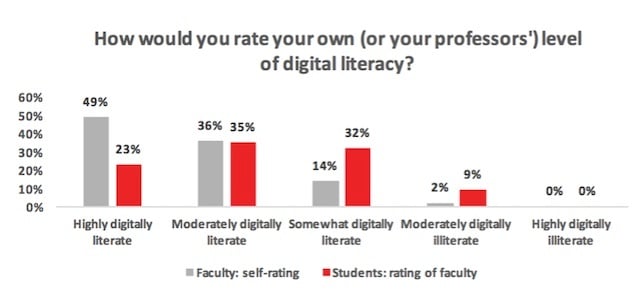easy video conferencing tool
Appear
If you are tired of Skype failures (Microsoft aquired it) and have difficult time navigate through Google Hangout, but want to connect using your social media accounts, this is an easy app for you.
Digital Literacy for St. Cloud State University
If you are tired of Skype failures (Microsoft aquired it) and have difficult time navigate through Google Hangout, but want to connect using your social media accounts, this is an easy app for you.
http://www.businessinsider.com/google-and-microsoft-embrace-ar-over-vr-2016-4
Virtual reality, like the new Facebook Oculus and HTC Vive, completely immerse you inside a computer generated world. It’s like being inside a 360-degree video game, or movie, or computer-generated simulation.
according to a report in The Information today, Google’s long-term bet is on augmented reality. The company is making not one but several follow-ups to Glass, and has a project called “Tango” that aims to outfit smartphones with computerized “eyes” that can map a 3D space.
More on augmented reality in this IMS blog
https://blog.stcloudstate.edu/ims/?s=augmented&submit=Search
The Immersive Education Initiative today announced that Università degli Studi di Padova (the University of Padua) is the official host of the 6th European Immersive Education Summit (EiED 2016). The prestigious academic and technical conference will run in parallel with the inaugural IMMERSIVE ITALY “general public” conference from June 21 through June 23.
More on immersive practices in this IMS blog:
https://blog.stcloudstate.edu/ims/?s=immersive&submit=Search
http://learnaroundtheworld.com/geoshow/?_ga=1.98930270.112281183.1459956177
More on the use of GIS technologies in education in this blog:



April 4, 2016 Christine Wolff, Alisa B. Rod, Roger C. Schonfeld http://sr.ithaka.org/?p=277685
The scholar-centric nature of the questionnaire ensures that potential changes in research and teaching inform our thinking, not only about academic libraries and scholarly publishing, but about changes in the educational enterprise more broadly.
My note:
By showcasing the diminishing role of physical presence and the increasing research using online methods, this study clearly proves that the 4/5 years debate if the reference librarians must sit on that desk (and answer the most popular question “where is the bathroom”) is futile.
What the study does not show, since it is conducted in its traditional (conservative) form, is that the library is NOT only the traditional library, where faculty and student search for information (being that in its physical appearance or in online access), but the library entails services, very close to the ones offered by IMS.
I see a discrepancy between literature (where libraries compel much more proactive approach regarding services) and the structure of this survey, which focuses on the traditional (conservative) role of the library as a gatekeeper to online resources [only]. Besides entrenching in 90’s practices of information literacy and/or “dressing up” old-fashioned information literacy with the new cloths of “digital literacy”as I witness at my workplace, the faculty must have been surveyed on the skills in metaliteacies, which the library can [must] provide, as per literature.
December 7, 2012 Roger C. Schonfeld, Jennifer Rutner http://sr.ithaka.org/?p=22532
history as a field in transition. It is characterized by a vast expansion of new sources, widely adopted research practices and communication mechanisms shaped by new technologies, and a small but growing subset of scholars utilizing new methodologies to ask questions or share findings in fresh, unique ways.
presented at D2L ignite April 15, 2016
April Glaser Culture Date of Publication: 03.25.16.
http://www.wired.com/2016/03/truth-and-power/
Truth and Power, the final episode of which airs tonight on Pivot. Directed by Brian Knappenberger.
Knappenberger, who directed the feature-length documentary The Internet’s Own Boy, about the late Reddit co-founder Aaron Swartz.
Social Media Has Helped Activists Reclaim the Narrative
it’s not just activists who are benefiting from new technologies. Knappenberger spends nearly half the series carefully explaining the myriad ways governments and corporations use digital tools to surveil social movements. From examining the cell-phone tracking technologies used by law enforcement to uncovering how repressive regimes work with American tech companies to thwart social movements, the series offers up a smart meditation on the threat of digital surveillance on political dissent
It’s a problem Knappenberger illustrates in the “Activists or Terrorists” episode, where he unpacks how “Ag-gag” laws were passed under pressure from corporate lobbying and have made it illegal to film or photograph inside any animal farm without consent of the facility’s owner.
“Prisoners for Sale,” the seventh episode, explores the story of two inmates-turned-journalists who started an independent publication to document systemic failures of the prison industrial complex.
++++++++
More on technology and civil disobedience in this IMS blog